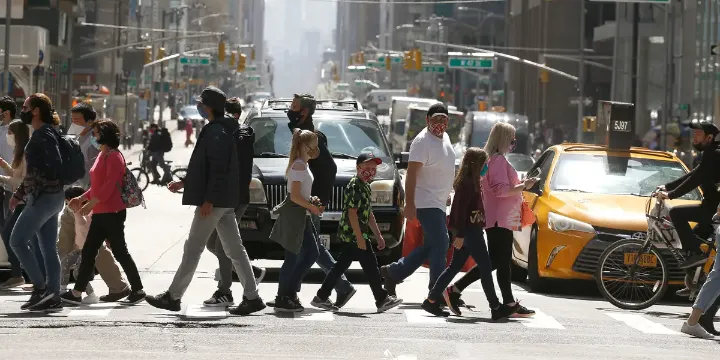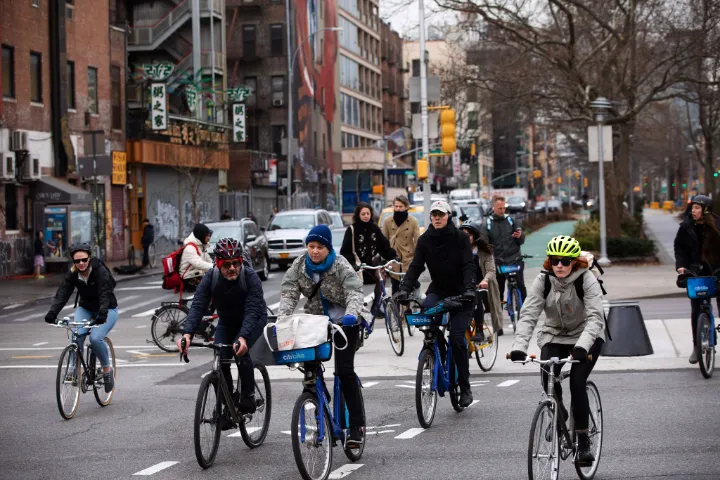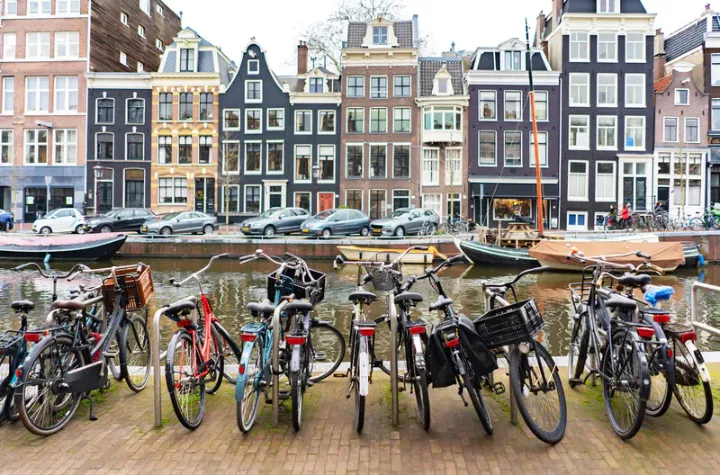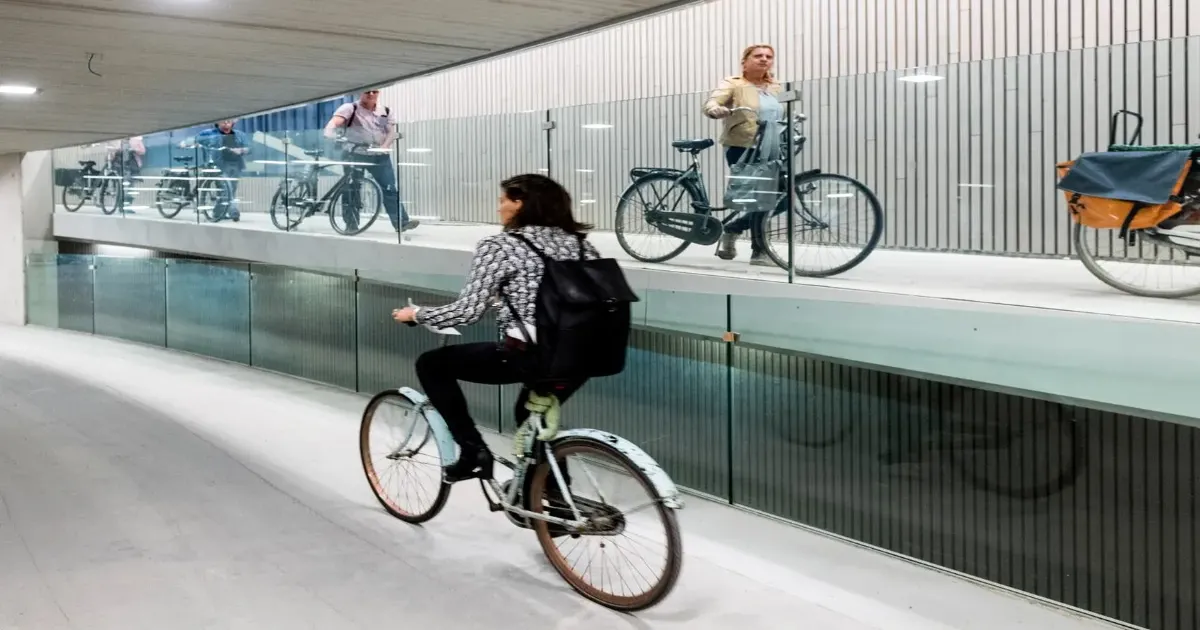Pedestrian advocates will never tell you that life as a walker invariably leads to one thing: public transport. Driving always struck me as a very expensive way to get fat. As for life as a car-free pedestrian, I gave it a shot, first when I lived in Singapore and later when I lived in New York. I’m not sure which was worse, the specter of crime on the train in New York or the smell of Chinese, Malay, and Indian cooking mixed on Singapore’s MRT. Headphones only work for your ears.

This leaves the rational person with only one option: to cycle.
I wish I were one hundred and twenty. If I were that old today, that means I would have been a boy in the 1800s when bicycles first ruled the road, then got to enjoy sixty good years of roads having very few cars. If you forget about wars and think about bikes, you’ve got to envy those one hundred and twenty-year-olds. Using nothing much more than bribes for the pollies, car and oil companies were able to crack down on people moving into cities for free. Anyone younger had to ride during or was born after the crackdown. If they wanted you to work in their factories, it used to be that capitalists built sanitary housing so you would not have to travel or confined their operations to a rail network, leaving the roads for you to ride on safely. The deal since the fifties has been that you, the worker, will buy your own house as far away from your work as you can be pushed, then pay five million layers of profiteers for the right to go anywhere. After depreciation, petrol, interest on car loans, insurance, government red tape, taxes for road wear and tear, spare parts, repairs, and garaging… well, how could you possibly afford a coronary bypass for that heart you haven’t been using? If you are that person, you would think my earlier talk of one hundred and twenty-year-olds were some left-of-field joke. You’ll be lucky to live longer than eighty on a cocktail of thinners.

I’m forty-six now and feel as elegant and fit as a boy. As a habitual cyclist, I can easily imagine living that to one hundred and twenty. So long as none of these porky suckers run over me in their cars, I should be tossing a ball with my great-grandson when I’m in my hundreds.
My work as a bicycle advocate is just about increasing my odds of reaching that age. Of course, I could move to Holland or Denmark. But cutting myself off from twenty million Australians who share my quirky culture and humor seems pretty extreme. My less extreme move has been from the grey network of roads to the cracks in car-focused cities through which we cyclists can squeeze. Those cracks can be found everywhere: beside stormwater canals, beneath electricity towers, along narrow routes where trains used to run, through parks and reserves, and beside beaches, harbors and rivers.
Had I never gone and hung out in Denmark or the Netherlands, where the whole city is yours as a cyclist, I might have been content just eking out a Morlock existence here in Australia. But no, I have it in my head that car cities can change. We all know they should change. I’m saying they can change.
We’ve seen how cities that are too crowded for residents all to have parking (New York, Paris, Copenhagen, Amsterdam, etc.) have populations who support bikes. This has given rise to the vain hope that cities with ample parking will follow suit. The right will beat might. The reason will triumph over prejudice. Pigs will fly too. Jan Gehl can be downloaded from the websites of every second local government website in the world. 99.999% of the recommendations therein have been completely ignored. Why? Because if your city has ample parking built in, then Copenhagen might as well be on Mars.

On Monday, I had 3618 hits to my blog, ten times the usual count for one day, all thanks to a clip I embedded in a post explaining what many would call a standard dutch intersection. On Vimeo, that same clip is getting up to 30,000 views daily. Why has this video gone viral when this Dutch-made video, which is virtually the same, has only been shared among people who care about bikes? The new one doesn’t talk about Holland. It isn’t kind, like Elvis not mentioning Chuck Berry and being thought of by white folk as the inventor of rock-n’-roll. But had it not been for Elvis, rock-n’-roll may not have taken off as it did.
That’s why I’m thinking this week about lessons for bike planning that can be taken from Critical Regionalism, a movement in architecture. It is a way of thinking that is global and progressive (not parochial or red-necked) but which, at the same time, is grounded in the cultural conditions of a particular region. Jan Gehl parachuting with ideas about blue-painted cycle tracks impresses the average Joe as much as I would be impressed if McDonald’s wanted to replace the canteens at my kids’ schools. Bicycle transport itself isn’t a problem. Everyone sees the advantage. The masses don’t want bicycle transport at the expense of car transport, as the Dutch and the Danish have managed to do. A critical regionalist method of increasing bike transport would begin by examining how bicycling works in a particular city.
Part of my research for Cycle Space was hanging out on a bike in several cities: Singapore, Chicago, Portland, Sydney,… I can’t even remember them all. Importantly, I have not led around. I didn’t want to devolve metal mapping into guides. I like going to cities and figuring out how to commute, meet with friends and use that city by bike. You get a sense as to how cycling might progress from within. You see, for example, the importance of parading oneself in French culture, of displaying your wealth if you’re Chinese, of standing on principle if you live in New York, or proving to yourself that you’re made of good stuff if your granny was Calvinist and has imbued these values within you.

From these necessarily simple observations about the collective bicycling psyche, you move on to working with maps. How much of the grey network of streets can you cordon off for protected cycle tracks? Given that the mayor was elected by voters committed to driving, the short answer is most likely: “not much!” A demonstration cycle track connecting destinations popular among students and yuppies might be your best start.
Again and again, though, I see local communities of true believers pinning their hopes on projects like these that stick it to drivers, then becoming despondent if they don’t go ahead. But there are so many other fronts they can work on!
The most important is redevelopment land. While bicycle advocates devote years to seeing a piece of one little street annexed, car lobbies are funding feasibility studies for entire old docklands and industrial sites. They want to ensure that they are redeveloped on an automotive mobility platform when they are redeveloped. A chapter in my book called “Brownfields to Bikefields” explains why derelict industrial land is vital to the future of bicycle transport.

Interestingly, the kinds of sites I am talking about are already in most cyclists’ cognitive maps of their cities. They’re off to the side of the shortcuts we find along former rail corridors, waterfronts, and the like. If only bicycle advocates saw these sites, the way developers do, not with big dollar signs hovering above them, but as territories to claim. From our point of view, they are territories where the right has a chance to beat might, where reason has a chance of triumphing over prejudice, and where maybe pigs won’t be able to fly, but where old people and children and everyone in between has a chance to organize their lives around bicycle transport.
I feel privileged to have been offered a plenary talk at this year’s Velo-City. Of course, I will go there to hear stories of triumph from cities led by dictators or unusual majors, with 51% of their voters not being car addicts. I feel that my selection as a key speaker is part of the broadening of Velo-City’s agenda, consistent with the decision to host Velo-City in such an awful nation for cycling as mine. The time has come for intrinsic solutions particular to dispiriting contexts.

